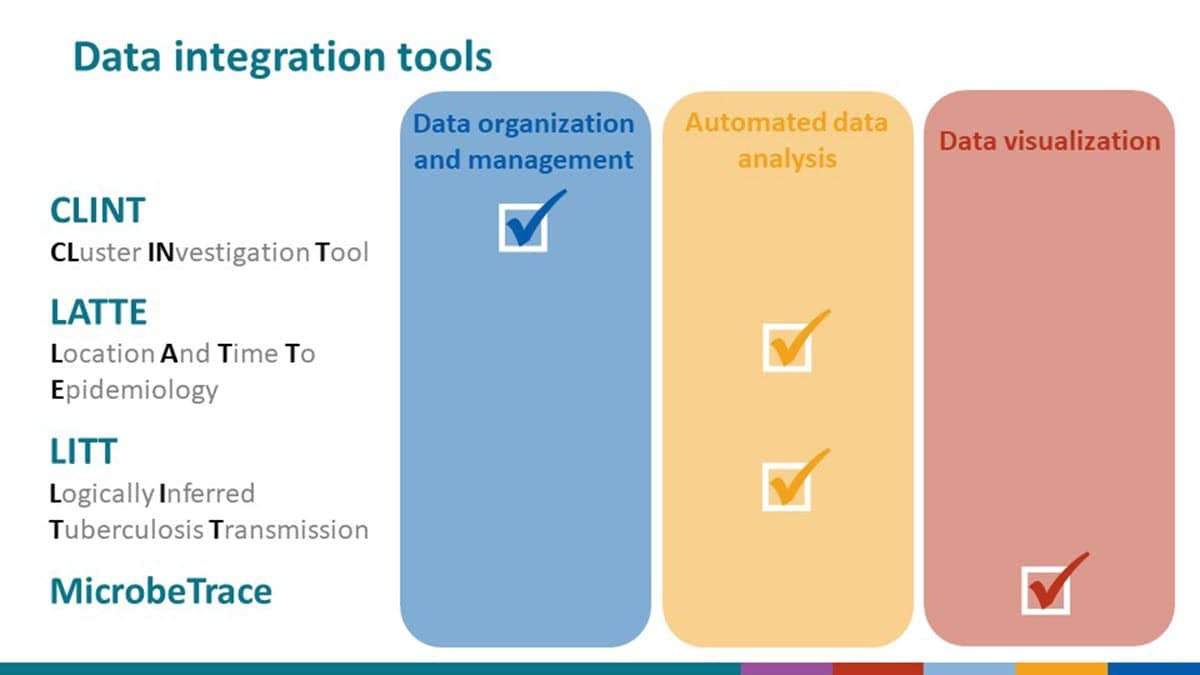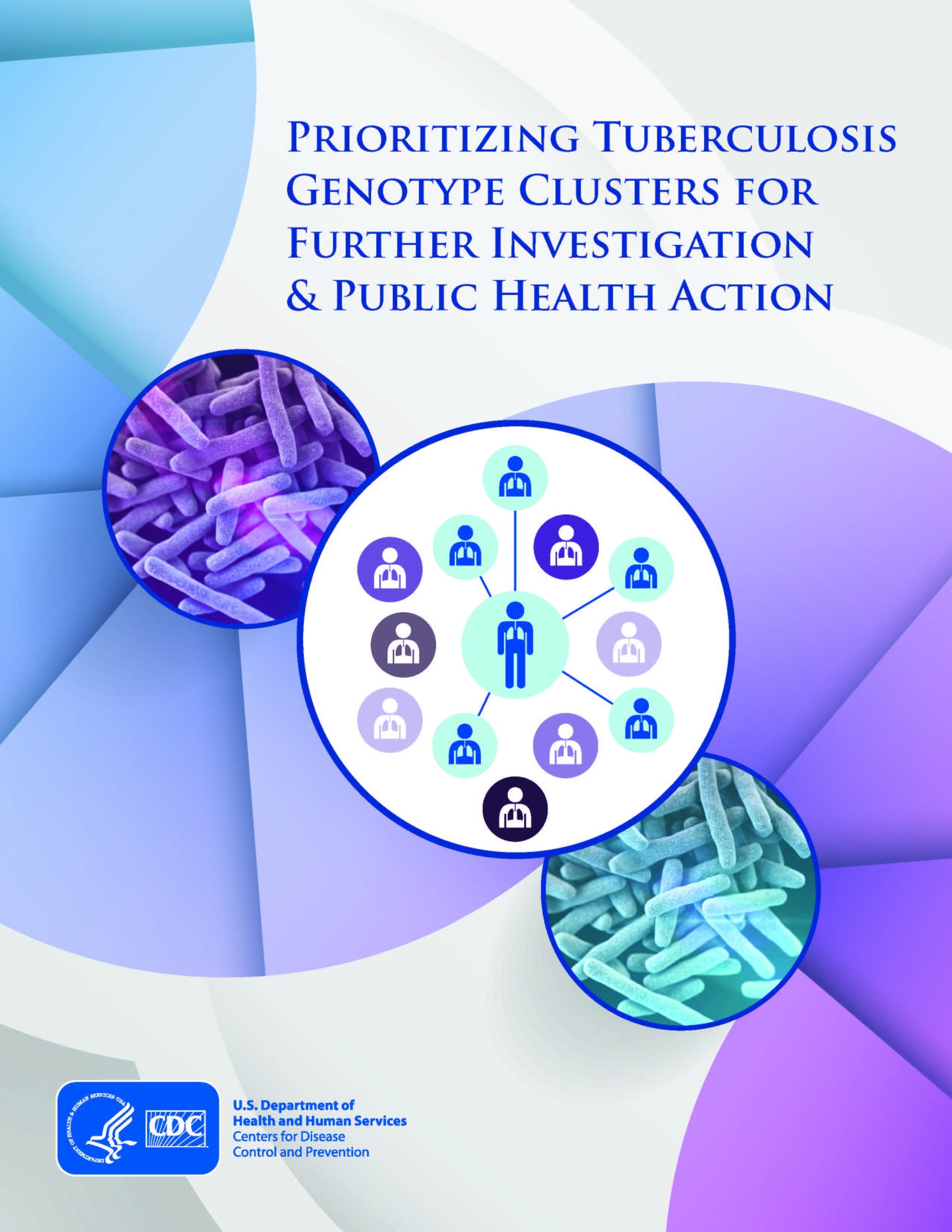At a glance
Tuberculosis (TB) genotyping is a laboratory-based approach used to analyze the genetic material (e.g., DNA) of Mycobacterium tuberculosis, the bacterium that causes TB disease. The total genetic content is referred to as the genome. Specific sections of the M. tuberculosis genome form distinct genetic patterns that help distinguish different strains of M. tuberculosis.
Applications
TB genotyping results, when combined with epidemiologic data, help identify persons with TB disease involved in the same chain of recent transmission.
TB genotyping:
- Helps distinguish between persons whose TB disease is the result of TB infection that was acquired in the past, as compared to recently or newly acquired infection,
- Adds value to conventional contact investigations,
- Offers a tool to help direct TB prevention and control efforts to preventing transmission, and
- Allows us to monitor our progress toward eliminating TB transmission.
Learn more
Tuberculosis Whole-Genome Sequencing
Tuberculosis Genotyping Information Management System
Resources
Prioritizing Clusters for Further Investigation and Public Health Action
Best Practices for Genotyping-Based Tuberculosis Outbreak Detection




